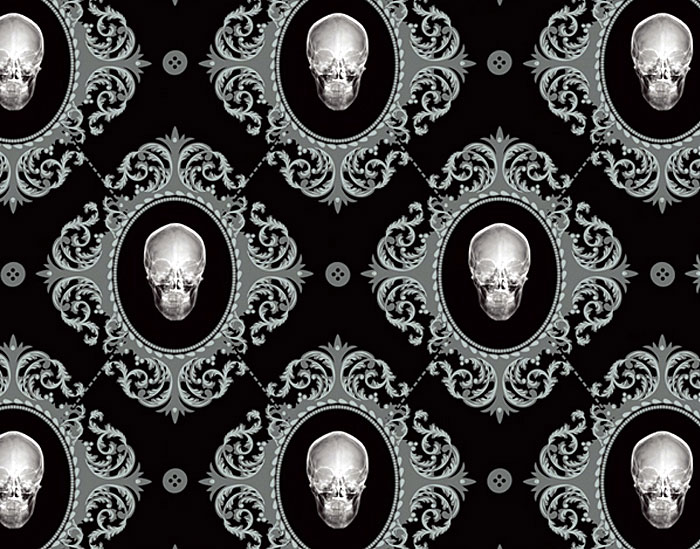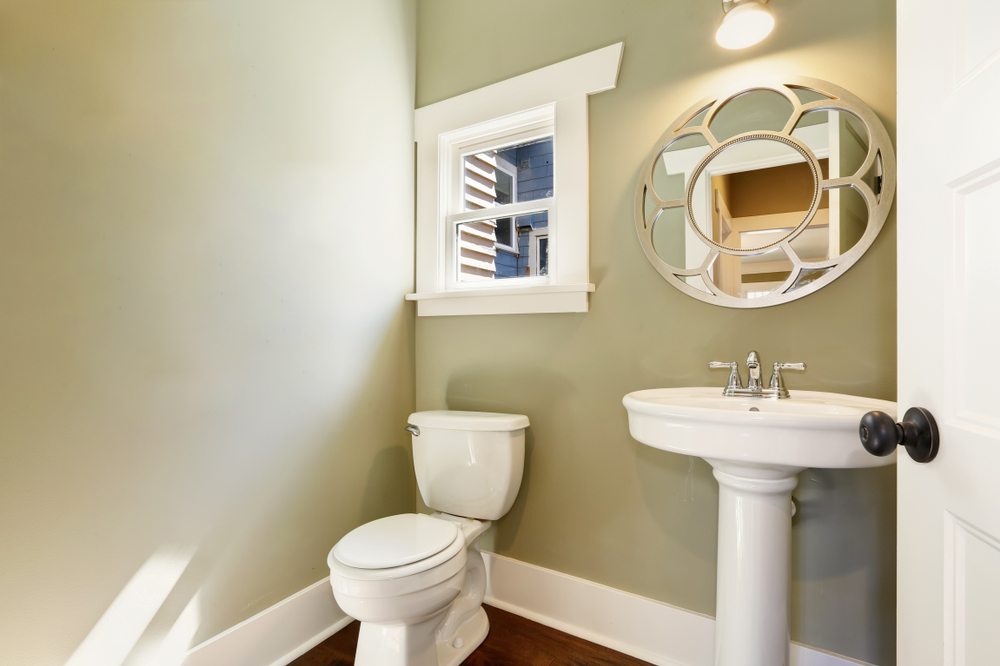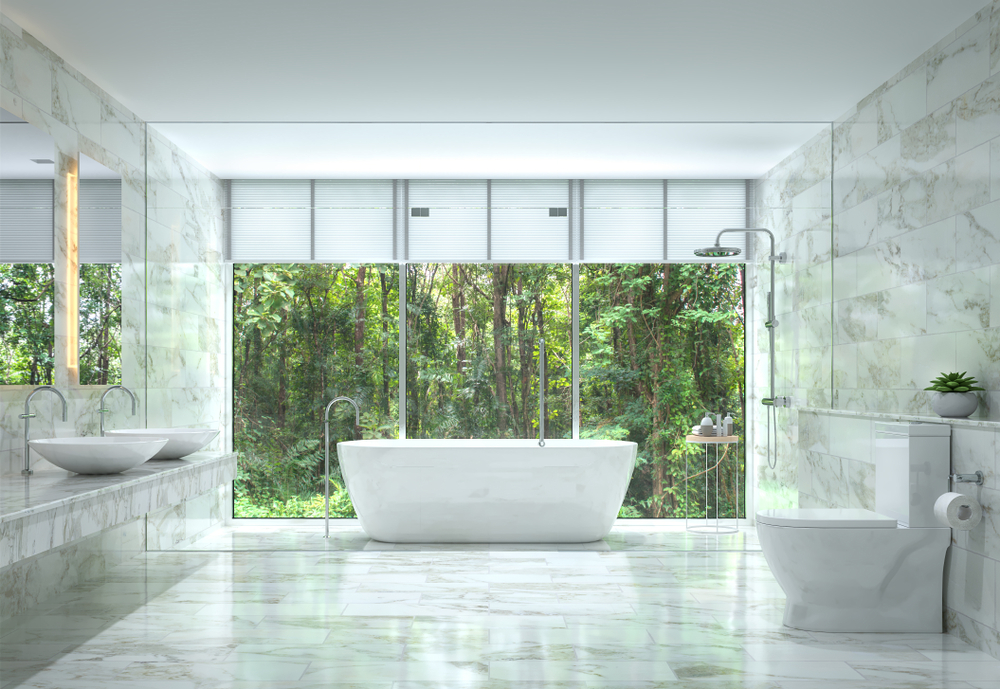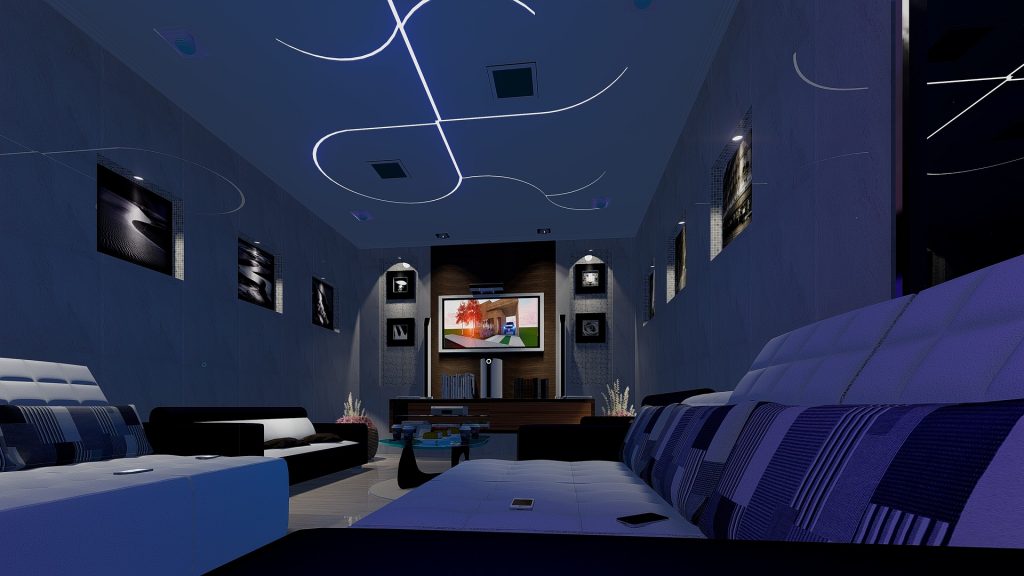“And the silken, sad, uncertain rustling of each purple curtain,
Thrilled me – Filled me with fantastic terrors never felt before;”
- “The Raven” by Edgar Allan Poe
The grim, the dark and the macabre appeal eternally to a certain kind of person. The images of brooding towers, tapestry-lined halls and eerie tales are appreciated by many outside of Halloween. If you’re one of these admirers of the dark, you may want to introduce these phantasms to your home with Gothic wallpaper and similar furnishings. Perhaps stocking your house with Gothic furniture is just one step of turning it into your dream house. Perhaps you just want to have a room dedicated to these ghoulish fantasies. In any case, you may need some help brainstorming ideas and settling on a Gothic motif.
If you are to delve deeply in the dark demesnes out of which Gothic wallpaper comes from, you may find it useful to understand just what Gothic means and what does Gothic décor mean.
Gothic Architecture and Literature

So what is the true meaning of Gothic? The term “Gothic” originally refers to the architecture and art styles that flourished in Europe around the high medieval ages. Gothic architecture was widely used by European designers between 1150 AD and 1450 AD, mainly for church designs. Gothic architecture is characterized by soaring towers festooned with crenellations and battlements, narrow halls with fluted columns reinforced by buttresses and majestic stained-glass windows.
This mainly religious architectural and art form would die down in popularity over the centuries until it would inspire a literary movement. The first Gothic novel is “The Castle of Otranto” a thrilling drama involving the titular castle, plots, ghosts and someone getting crushed by the falling helmet of a giant. The popularity of this novel propelled the Gothic literary movement.

In these books, supernatural and eerie threats emanate or surround Gothic buildings, such as abbeys, castles and manors. Strange occurrences, gruesome deaths and suspenseful plots also made them the literary forebears of the horror genre. Key novelists include Mary Shelley, Bram Stoker and Edgar Allan Poe.
The literary Gothic movement in turn became the favored haunting grounds of people who appreciated the darker aspects of life. People who saw the beauty in the macabre and found inspiration in the grim. These people eventually codified the goth subculture.
Goth Subculture

Goth subculture is a counter-culture phenomenon dedicated to dark, somber and often melancholic themes. There are many layers to goth subculture. Some find the somber aspects of the aesthetic appealing, others choose to adhere to the scary facets.
The level of adherence to goth subculture also varies. Some people only occasionally dress in black clothes, pale makeup and leather. Others want to remodel their home with Gothic wallpaper. Some people view it as a hobby or a phase, others dedicate their whole lives to the aesthetic. All are valid.
If you wish to explore the beauty of Gothic home décor, whether because you want to make an old home feel new again or because you want your property to align with your interpretation of beauty, here are some tips on what constitutes Gothic décor and how to use them around your home.
Hallmarks of Gothic Décor

Gothic home décor is as varied as the people who make them. Some are more cute or kitschy than eerie and elegant. However, they do have commonalities which tie them to same design group.
Some of these commonalities include:
-
Dark colors
Gothic décor primarily comes in dark hues such as deep purple, wine red and the ubiquitous black. Occasionally, dark colors are partnered with brighter hues like vivid scarlets, glaring pinks or blazing whites, but the dark colors will still be the main component.
-
Eerie animals
Gothic design loves animals that most would condemn as spooky or scary. The Gothic menagerie includes ravens (in honor of Poe), spiders, snakes and wolves.
-
Spikes and bones
Many Gothic novels take place in cemeteries and deal with heavy themes such as death. This means Gothic home décor often has preponderance of wrought iron spikes and skulls are a must. The spikes or thorns also pay homage to the spires of the architectural movement.
-
Fairy Tale Motifs
It didn’t take long for the first people to embrace Goth to realize that a lot of the Grimm fairy tales were often very dark, if not disturbing, in nature. The original fairy tales, not the toned-down versions so common today, often feature murder, mutilation and other macabre themes making them ideal for Gothic furniture designs.
Now that you know the highlights of Gothic home décor, it’s time to delve into the possible furnishings you can employ to evoke the eeriness and brooding darkness inspired by Gothic architecture.
Gothic Wallpaper

One of the best ways to instantly transform a room into a lair is by replacing the bright and cheery wallpaper with Gothic wallpaper. The first Gothic wallpapers, produced in the 19th century, were inspired by the medieval aesthetics. As such original Gothic wallpapers, meaning those who take inspiration from the medieval architecture instead of the recent aesthetic, has the following design trends:
- Appear like medieval tapestries rather than wallpaper
- Feature plants and leaves heavily
- Usually dark green and or in primary colors
- Hard to distinguish from Victorian wallpaper
However, Gothic wallpaper that’s inspired by the aesthetic appeal of the works of Poe and Shelley have very different designs.
They usually have the following features:
- Thorny patterns or branches
- Dark colors, like purple, deep blue and wine red
- Features the aforementioned spooky animals
- Dark stripes on comparatively lighter backgrounds
- Skull and bones motifs
You can look for commercially manufactured Gothic wallpaper, but you may want to customize a design or make some as a budget-friendly project. For such a project, you’ll need a plain wallpaper of your choice, often in a dark color. If you’d like, you can get a bright and suitably Gothic color, such as red, for your base.
Next, cut out a stencil pattern on a piece of cardboard of make a stamp from an old block of wood or potato. The pattern could be a skull and rose, repeated bones or thorns. Use a contrasting color paint to imprint it on the future Gothic wallpaper. For example, on a purple wallpaper, you may want to make a repeating pattern of femurs in white paint. On the other hand, a bright red wallpaper might look better with a white pattern of roses with black thorns.
Naturally, you’re free to put up your new Gothic wallpaper anywhere, but there are some places where they will do particularly well.
- Bedchambers are were some of the most gruesome events in Gothic novels take place and they would help stamp your personality in them.
- Parlors, sitting rooms and other places where you can receive guests also make excellent areas for such Gothic décor. It will showcase your style as well as unnerve them, if such is your desired effect.
- Libraries and studies also make excellent areas for Gothic wallpapers, helping increase the mood of grim determination in them.
Gothic wallpaper should not be used in areas such as kitchens, bathrooms and laundry rooms for the practical reason that they won’t be much appreciated there, and they may get ruined quickly.
Gothic Furniture

Gothic furniture is characterized by being heavily built, usually out of wood, and painted darkly. They display an abundance of spikes, scrolls, vines and thorns. Desks and tables might have heavily carved legs that look like paws or have scrolls of vines running up them. Chairs and sofas are usually upholstered in velvet, black or red being the preferred color. They either look like faithful copies of Gothic medieval furnishings or slight exaggerations.
When choosing Gothic furniture, you must be very careful to balance out the macabre intensity of the design and be wary of overstepping it into tastelessness. After all, you won’t want your home to look like a gaudy Halloween attraction rather than a sinister demesne. Exercise caution when selecting your Gothic furniture.
Here are a few guidelines that could help you avoid going overboard with the macabre.
- Is it sinister or spooky? Sinister makes Gothic furniture look threatening in a subtle way, such as a carved wooden chair with faint designs of thorn-covered skulls. Spooky makes it look tacky, like a glowing skull lamp.
- Is it practical? Sure, that heavy desk that looks like it could be owned by Roderick Usher might be amazing, but will it even fit into your door? Can your house support the weight? Do you even use a desk often or will it simply gather dust?
- Is it tasteful? Yes, Gothic furniture and culture is about embracing sides of design that isn’t appealing to anyone. But there’s a difference between making a statement and making a scene. Consider the difference between masterpieces of Gothic literature such as “Ligeia” and compare it with the trashiness of schlock shockers. If your furnishing is designed to elicit cheap thrills and gross-outs rather than evoke the supreme spectral beauty of Gothic décor, it’s not really respecting the aesthetic.
Gothic wallpaper and Gothic home décor are just a few ways you can express your fascination with the grim and the eerie. Employ them with caution and exercise caution to create an aura of subtle menace and dark appeal.




